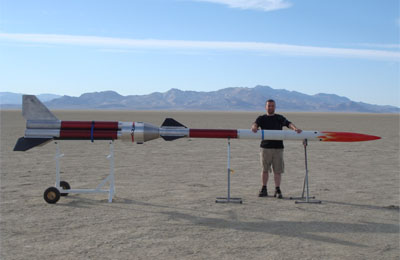 |
Rockets |
 |
| research |
| teaching |
| projects |
| software |
| maths talks |
| brain |
| rockets |
| contact |
|
|
| Background | HAB | Balloons | Rockets |
BalloonsBallooning has a long history of helping scientists explore and make sense of the world. They are particularly suitable for High Altitude Bioprospecting since they are low-cost, carry relatively large payloads and spend a long time in the air allowing a loarge volume of air to be sampled. Before our rocket launch, HAB went up on a helium balloon to test the performance of the experiment, communications and GPS tracking system at high altitude. A latex balloon was filled with helium up to a 2.5m diamater. It was then released and over the next 90mins rose to a height of over 27km, expanding as the air pressure reduced with altitude until it had a diameter of 15m and popped. It then took about the same time again to return gently to earth on its parachute. The balloon and tracking was provided by Stratofox, who used current weather data to predict the flight-path of the balloon as it travelled up through different layers of atmospheric winds. They then carefully chose the launch site such that the baloon would, assuming the wind didn't change, land on the desert playa close to base camp. HAB performed well in terms of battery life and low temperature, due to problems with modem communications we were unable to initiate the air sampling and so no DNA was detected. But by identifying the problem early we were able to fix it, and remove it from the critical path of the experiment, before the rocket launch. Extra Information:Video of Balloon Launch (1MB)Balloon GPS Tracking data External Resourses :History of Scientific BallooningPiccard in Space Opera for which I was Scientific Advisor |
 |
||
 |
 |
||
 |
|||